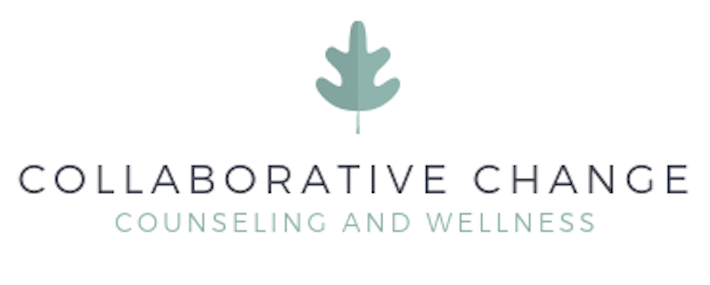The goals of Exposure and Response Prevention in OCD sound relatively simple: to accept and tolerate obsessions and to resist compulsions. However, to anyone who has experienced Obsessive Compulsive Disorder, the idea of accepting anything about OCD may seem completely counter intuitive. Who would want to accept painful, intrusive thoughts or images about ourselves or people we love? To the contrary, most of us would want to fight those thoughts and images with every fiber of our being. Similarly the instruction to not engage in the one thing that has brought relief – compulsive behaviors – may seem unnecessarily cruel. Still, the research is clear – the most important goals for Exposure and Response Prevention for OCD are acceptance and resistance.
Acceptance
Acceptance is a critical component of treatment, and the first goal for Exposure and Response Prevention for OCD. Until someone is fully able to recognize the presence of their OCD symptoms and not immediately try to squash or get rid of emotions that follow obsessions, the process of recovery from OCD will be much less effective.
There is no denying that obsessions are upsetting. They are. Obsessions can include thoughts such as “I am contaminated”, “I am about to die”, “my partner is about to die”, or “I am a horrible human being”. Most of us would go to great lengths to get certainty that these ideas are not true. In fact, we do every day. We wash our hands after touching the worm at the playground. Maybe we play Dr. Google with a strange symptoms we are worried about. We tell our loved ones to buckle up and then make sure we ourselves are buckled. We ensure we have said our prayers before we go to bed. All of these behaviors are intended to try to provide us with certainty. For instance: I am clean, I am safe, my loved one is safe, and I am a good person.
Accepting Uncertainty
OCD focuses on the need to know for sure. Unfortunately, we rarely can be perfectly certain about anything. OCD compulsions give the false allusion that we CAN have certainty. For example, it feels true that if we check the locks enough times we really are safe. In fact, any number of things could happen during the night that jeopardize safety even if the doors are locked. But the search for certainty can often lead to OCD thoughts and compulsive behaviors ballooning. We start to rely on the compulsions for relief from the distress of not knowing for sure. We check every lock in the house, and then go back again three times for good measure.
Instead of relying on compulsions for comfort, Exposure and Response Prevention helps clients improve their ability to tolerate uncertainty. The more someone is able to accept some uncertainty and risk, the less power OCD will have. We can give up believing we can keep ourselves or those we love completely safe from harm. Instead, we can commit to doing the best we can within reason to protect ourselves, and still acknowledge risk. We can wash our hands once, not ten times, before eating. We can also accept the risk that we may have missed a spot while washing.
Accepting Obsessions
Our mind has a mind of its own. Meaning, we can’t typically control what thoughts are going to pop into our heads at any given moment. Obsessive, intrusive thoughts are going to come and go for all of us. For people with OCD, however, it is much more difficult to move through an intrusive thought. People with OCD can get stuck in the same intrusive thought in a repetitive fashion. This rumination, and the distress the rumination creates, can then lead to the compulsive behaviors. Compulsive behaviors attempt to get the obsessive thought to disappear. For example, if I am afraid that I touched a spider while walking my dog, the compulsive behavior may be to wash my hands several times or to retrace my route again and again making sure I don’t see any spiders or spider webs.
In order to decrease the presence of compulsions, we have to first accept the presence of the obsessions and recognize them as OCD, accept that nothing we do can bring absolute certainty that the obsession is not or will not be true, and accept that the obsessions will fade on their own if we do nothing at all. Once we have accepted these premises, we can focus our attention on tolerating the distress caused by the intrusive thought, instead of devoting our energy and attention to compulsions.
Resistance
Resisting compulsions is the second goal of exposure and response prevention for OCD. Once we are able to accept the presence of obsessive thoughts as well as general uncertainty, OCD is weakened. We can begin to resist compulsions more easily.
Resisting Influence
By accepting and labeling OCD, we inherently differentiate ourselves from OCD and can better resist its influence. We no longer fully believe the message of fear and compulsion that OCD produces (“the house will burn down if you do not check all your electrical outlets before you leave for the day”). Instead you can begin to find your own reasons for NOT believing those OCD thoughts. For example, you can focus on the costs of the compulsions (checking the electrical outlets has often made you late for work). And you can identify how the compulsions have interfered with your values (I want to be a reliable employee) and goals (I’d like to get a promotion but that won’t happen if I keep being late).
Resisting Impulses
in addition to accepting the presence of OCD, when we accept the premise of life’s uncertainty, we can more clearly see the futility of all of our compulsions, or efforts to gain certainty, and resist the compulsions. For example, we can notice how other family members don’t follow the same sanitization measures as we do. Thus they nullify all of our efforts to sterilize the home. We are only existing in varying degrees of contamination, never truly achieving full cleanliness.
Combining the Acceptance and Resistance Goals of Exposure and Response Prevention for OCD
Once we have decided to try to accept and tolerate the presence of obsessive thoughts and resist compulsions, it is time to put the strategies together to meet the goals of exposure and response prevention.
Let’s take the same example from above. If I am afraid that I touched a spider while walking my dog, I may remind myself that this thought is an intrusive OCD thought (Accepting the Obsession). I will tell myself that no amount of washing my hands or retracing my steps will change whether I touched a spider or prevent me from touching a spider inadvertently in the future again (Accepting Uncertainty). So instead of engaging in those washing or checking behaviors that take up so much time in my day and ultimately can’t protect me, I’m going to wait the thought out (Resisting the Compulsion by focusing on the cost and futility). Instead I will turn my attention to this conversation with my partner because it’s important to me to be present (Resist the Compulsion by engaging in activities consistent with our values).
Essentially, we deny the OCD thought legitimacy by not acting as if it is true. The more we do this again and again, OCD loses it’s power.
Exposure and Response Prevention Therapy
An individual therapist experienced in Exposure and Response Prevention can help you work towards freedom from OCD by helping you achieve the goals of exposure and response prevention for OCD. Contact us today to see how we can help.


